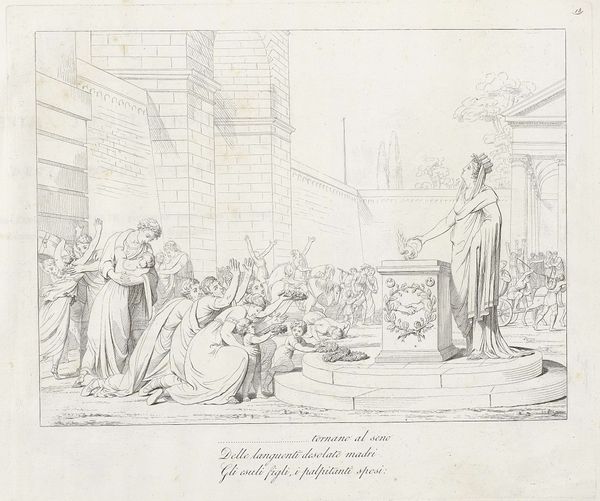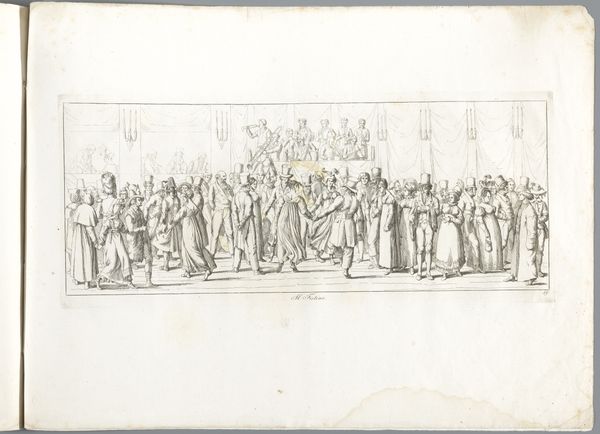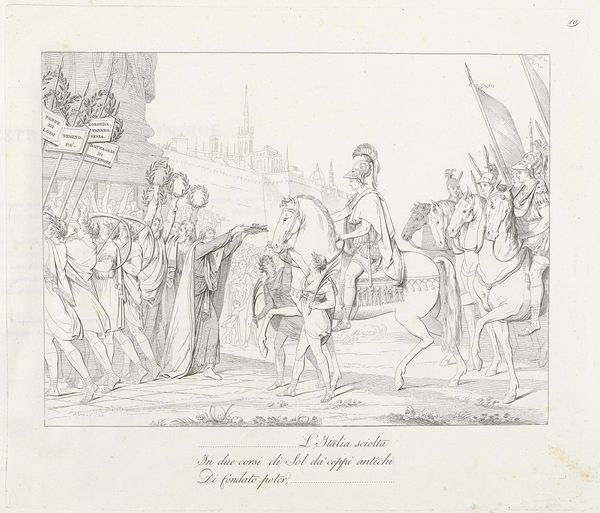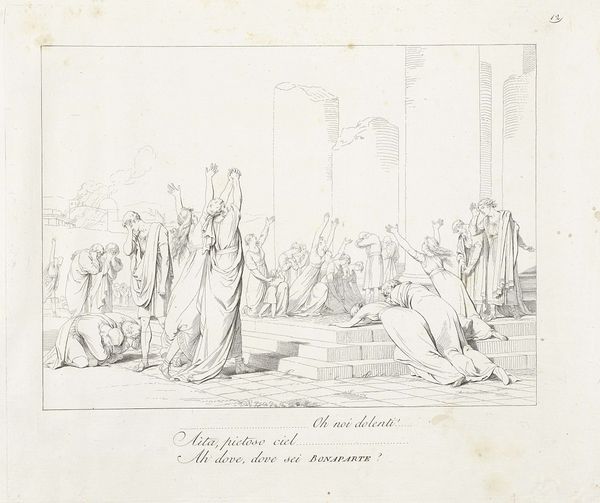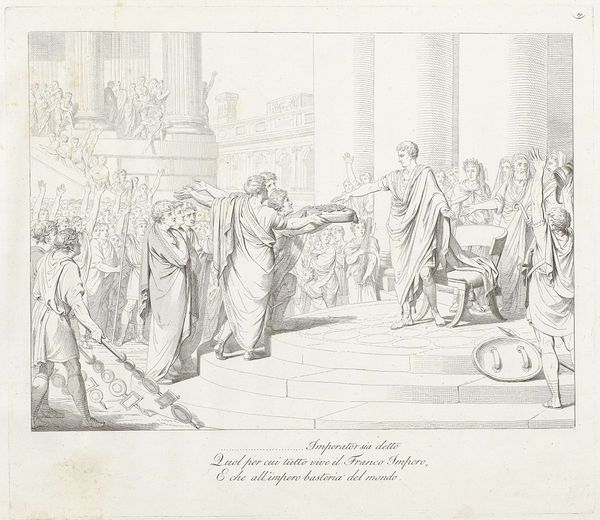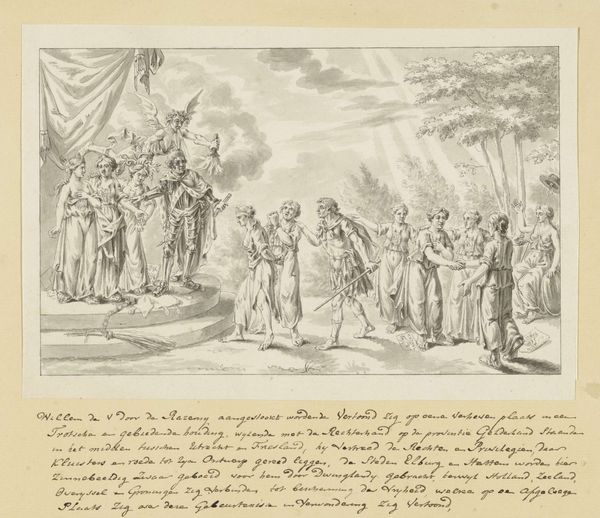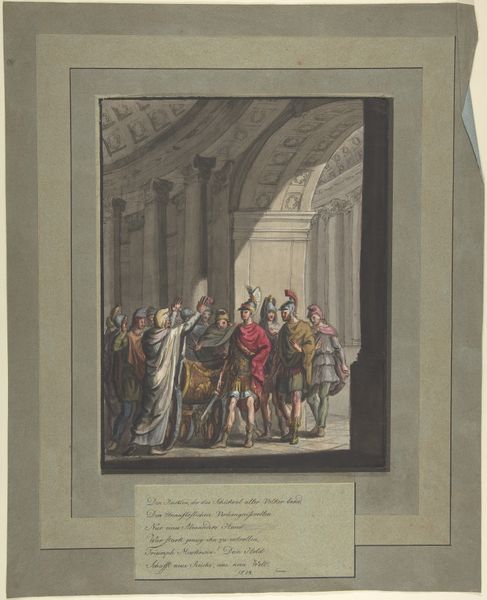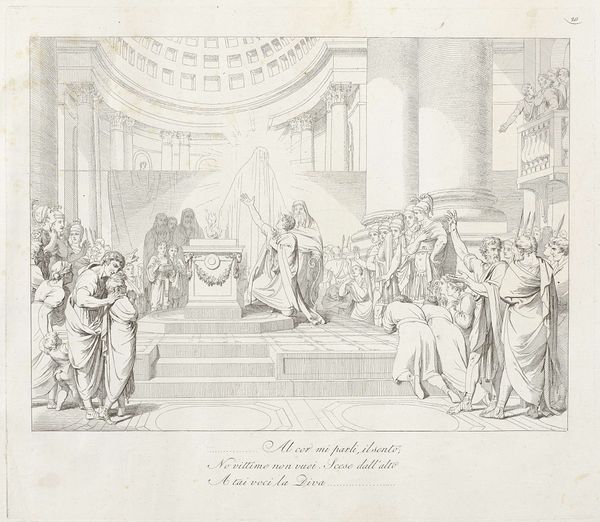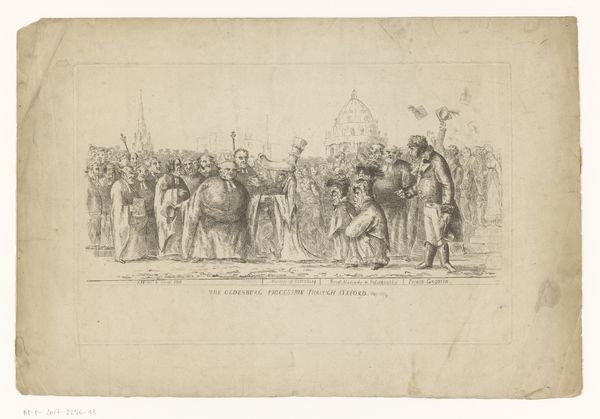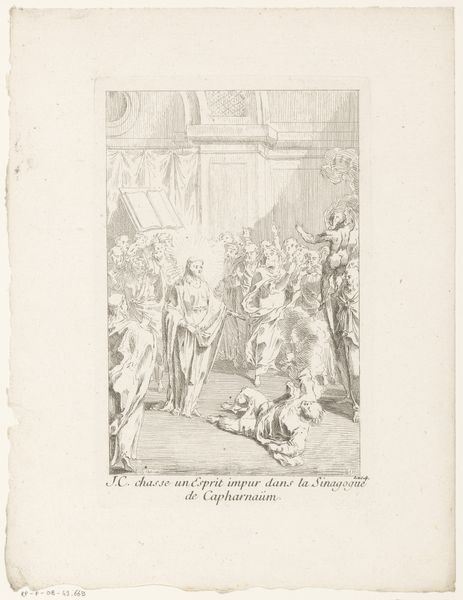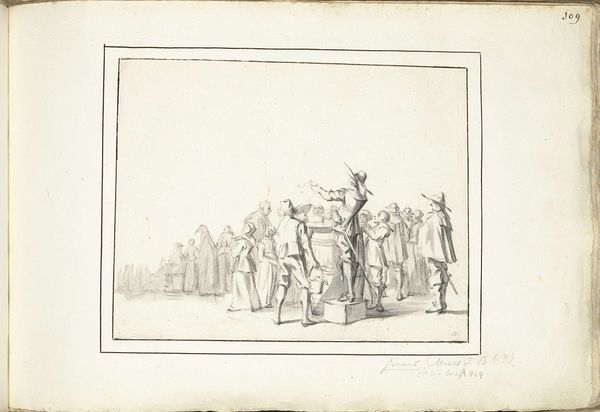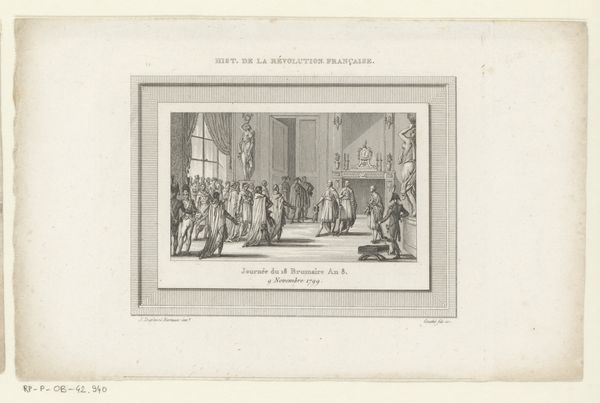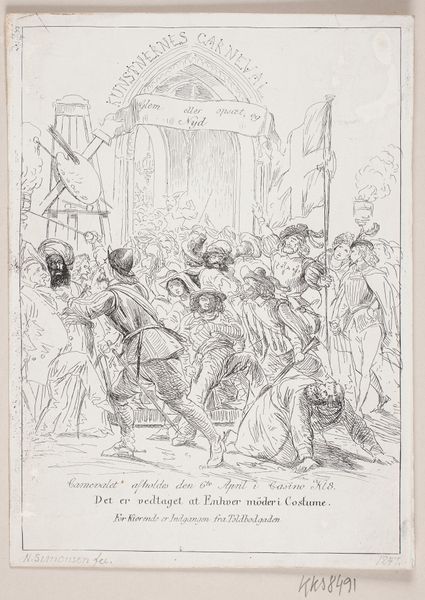
Napoleon wordt aangevallen door een man met een dolk in een Romeinse tempel 1808
0:00
0:00
drawing, print, engraving
#
portrait
#
drawing
#
neoclacissism
#
allegory
#
narrative-art
# print
#
classical-realism
#
figuration
#
line
#
cityscape
#
history-painting
#
academic-art
#
engraving
#
realism
Dimensions: height 332 mm, width 382 mm
Copyright: Rijks Museum: Open Domain
Editor: So, this is "Napoleon wordt aangevallen door een man met een dolk in een Romeinse tempel" by Teodoro Matteini, made in 1808. It’s an engraving with a strong Neoclassical style. The scene is really busy and the line work creates a sense of controlled chaos. How do you read this image? Curator: This image, while seemingly a straightforward depiction of an assassination attempt, operates on a deeper level, reflecting the anxieties and power dynamics of the Napoleonic era. Note the setting within a Roman temple – a deliberate choice to associate Napoleon with the grandeur and authority of the Roman Empire. However, the presence of the assassin introduces a counter-narrative of resistance and challenges the image of unchallenged power. Editor: It feels contradictory though, doesn't it? It's Neoclassical, meant to glorify, but it depicts violence against the central figure. Curator: Exactly. And that’s where the piece gets really interesting. It prompts us to consider, whose story is being told and for what purpose? The engraving might ostensibly appear to condemn the attack. But consider how it simultaneously visualizes a challenge to Napoleon’s authority. The act of depiction, in itself, gives space to a counter-narrative. Think about who might have commissioned or purchased this print? Editor: Someone with complicated feelings towards Napoleon, perhaps? Maybe admiring his power, but wary of it too? Curator: Precisely. And considering the time period, we can imagine that those complicated feelings were pretty widespread, reflecting the political and social turbulence of the era. The print functions as both a record and a commentary, embedded within very specific ideological battles. Editor: So it's not just about the historical event, but about the dialogue and debate *around* the event, influencing how people understood it? Curator: Yes. This is more than an image—it's a historical artifact, embedded within specific power dynamics, opening a space for considering alternative viewpoints during times of oppression. Editor: I see now. The print doesn’t simply depict an event, it actively participates in the construction of historical meaning and challenges our perception of absolute power. Thanks!
Comments
No comments
Be the first to comment and join the conversation on the ultimate creative platform.
